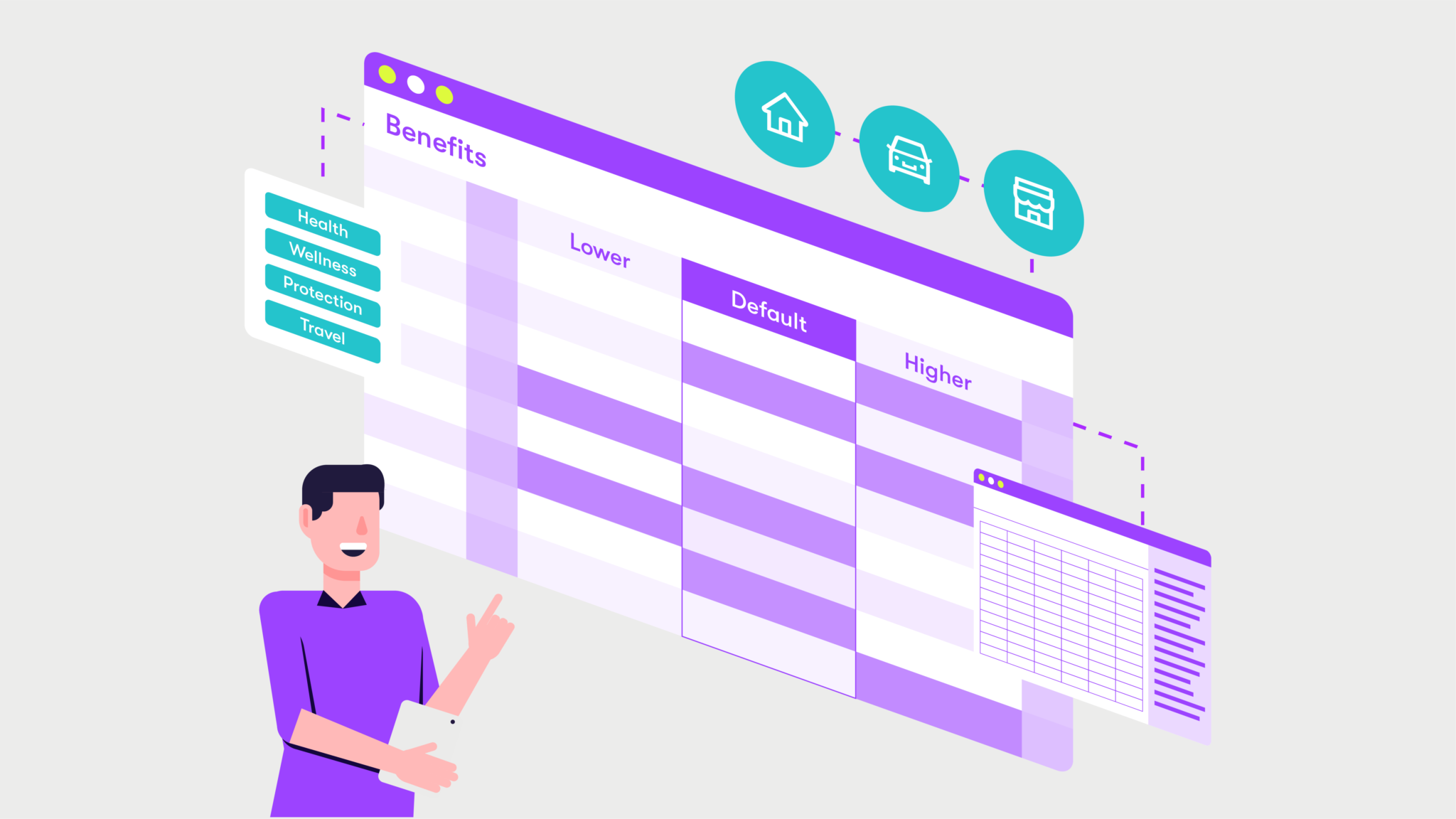Today’s employees are looking for more flexibility at work, and they’re looking for this to take multiple forms. They want more options and choice when it comes to work location, working hours, benefits, and more. This is logical, given a lot of employees have been and continue to work from home, or need more flexible work arrangements during the COVID-19 pandemic.
Two distinct, yet related trends are emerging in employee benefits. Employees are now more focused on wellness. People are understanding more about the importance of prevention over treatment of diseases, which means they don’t only want traditional medical insurance cover from their employers, but they are also looking for wellness programs. Additionally, there is a need for flexible employee benefits. Each employee’s need is different, but it would be impossible for employers to tailor the benefits for each individual employee. The solution is to offer a ‘flex’ dollar budget to employees, and they decide on their own how to spend this amount. These two needs are closely related, and employees would need to choose between how much, and what type of medical protection they need, and how much health and wellness coverage they need.
According to a recent survey1 on employee benefits, 60% of employers think that they should improve the ‘benefit portfolio’ by expanding flexibility and choice, as well as providing emotional and physical wellbeing benefits. Yet only 29% of employers worldwide are offering significant choice and flexibility in their benefits.
So why is it that companies who want to offer flexible employee benefits do not offer these types of benefits? A flexible benefits program is not about simply giving an extra amount of money to employees and then prompting them to spend it on whatever they want without guidance or structure. While the benefits are flexible, there are areas where employers want to improve their employee’s welfare. For example, some employers want to focus more on protections, some focus more on health and wellness, some focus more on emotional well-being. Quite a lot of work is needed to administer a flexible employee benefits plan, from plan design, to plan selection, to flex dollars spending and administration. A sophisticated flex system is required to make this work, both for employees and employers alike.
Another consideration is that it is not cost effective for employers to develop their own flexible benefit system. Usually, large brokers develop the flex system and use it to administer flex plans for their own clients, which are mostly large corporations. It is more than a system with a UI where employees can choose from different plans and reimburse items using their flex dollars. The flex plan of each employer is unique and different. Besides choices around benefits, there are also complicated rules such as how much upgrade and downgrade are allowed, rules on dependants, and some available choices of different benefits are inter-related, for example specific benefits chosen must be locked in for more than a policy year. It will be also quite challenging for direct insurance companies to develop their own flex systems, as unlike brokers, they may not have economies of scale. This tends to be an oligopoly market.
In order to promote flexible employee benefits, and thereby improving employee’s welfare, it is time for insurance companies to step in, so that group insurance clients from other channels can also have access to flex systems. The main challenge for insurers is the core logic of the flex system, as they already have extensive experience in UI/UX. This is where technology like Coherent Spark can help. Insurers can set up their logic in Excel to incorporate all the rules and calculations needed in a flexible employee benefits plan. Not only are their internal product teams already proficient in this software, what else is more flexible than Excel? The beauty of Spark is that it can instantly convert all the logic from these Excel spreadsheets into ready to use APIs, which can be connected to a flex system. We know the world is changing, but with Spark this isn’t a problem, as any new logic required for a new flexible benefit plan can be updated directly in the Excel spreadsheet and re-uploaded to Spark. The changes are instantly reflected through the API, and into the flex system.
Speed is also important when creating flexible employee benefits. The employer usually works out the flex plan with the insurance companies before the policy effective date. Hence, there is not much time remaining for flex policy setup after the plan is confirmed but before employees are able to pick their initial choices. A good flex system should not only be very flexible, it should also be designed such that the setup time for each group policy is kept short.
Finally, in addition to seeing simpler flexible benefit designs, the trend of flexible benefits will likely be extended to small and medium sized companies as well. This is a winning situation for the employers, the employees and also the insurance companies. Employers can offer more flexible and attractive benefits. Employees can tailor their own benefits to suit their needs. For insurers, there is the opportunity for the employees to spend their flex dollars on other individual products. With the help of new technology, flexible employee benefits can be scaled from the traditional niche group to a broader and more diverse market.
References:
- 2021 Benefit Trends Survey. WTW. https://www.wtwco.com/en-BE/Insights/2021/10/2021-benefit-trends-survey
CC Wong
-
This author does not have any more posts.





